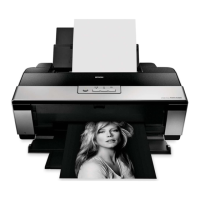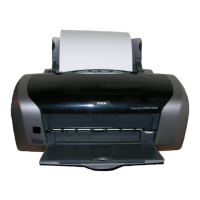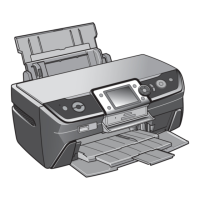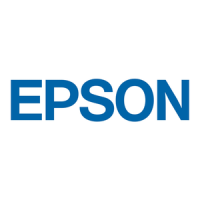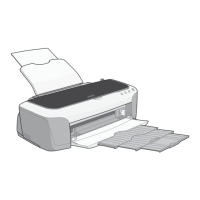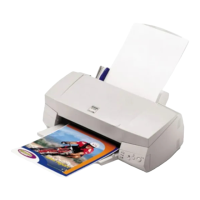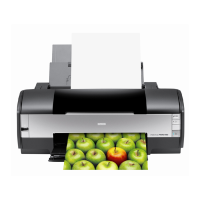EPSON Stylus PHOTO 2100/2200 Revision B
OPERATING PRINCIPLES Printer Mechanism 41
2.2.1 Carriage Mechanism
The Carriage mechanism consists of the Carriage motor (CR motor), Carriage guide
shafts A (main shaft), B (sub shaft), Platen gap adjustment mechanism, Carriage lock
mechanism, and others.
2.2.1.1 Carriage Motor (CR Motor)
Like the one of the conventional Stylus PHOTO 2000P, the Carriage mechanism of
this product uses a DC motor as a drive source. The following indicates the Carriage
driving DC motor specifications.
The CR motor of the conventional model uses a stepping motor, and the carriage unit
position was controlled by open loop control. To stabilize the printing quality and
ensure silent operation, however, this product adopts the DC motor and linear encoder-
based closed loop control like the Stylus PHOTO 2000P to control the Carriage speed
and position. Also, the conventional DAC control was changed to PWM control.
Simultaneously, the basic signal (PTS signal) is generated to time ink discharge.
Driven by the CR motor, the Carriage unit moves within the printing area along the
Carriage guide shaft of the printer mechanism during printing.
Figure 2-2. Carriage Mechanism
Using low-cost DC motors, this product grasps the variations of the torque constants,
coil resistances and power supply board output voltages of the individual DC motors
adequately to carry out heat generation control according to individual differences.
The variations of the torque constant, coil resistance and power supply board output
voltage of the motor are measured in a CR variation measurement sequence when the
CR mechanical load is in the initial status (Max. 150g.cm) and saved into the
EEPROM (AC<H>). According to the variations (individual differences) measured in
this sequence, the voltage is corrected to make the drive current value constant
(without an individual difference) according to the variations (individual differences)
measured in this sequence.
Further, to set the appropriate drive current value according to the variation of the CR
mechanical load, the mechanical load is measured in a CR measurement sequence and
saved into the EEPROM 6C<H>, 6D<H> in a power-on or IC change sequence.
However, if 14 is saved at the EEPROM 6C<H> and 05 at 6D<H>, Fatal error will
occur since too large load is applied to the CR drive system.
Accordingly, not only the mechanical load but also the variations of the motor and like
are taken into consideration to correct the drive current value of the CR motor. In
addition, a heating value is calculated from the CR drive current value, and when the
specified heating value is reached, wait time (0.3s to 7.9s) is provided per CR path for
printing.
Table 2-2. CR Motor Specifications
Item Specifications
Type DC motor with brushes
Drive voltage +42V +/- 5%(voltage applied to driver)
Winding resistance 23.0Ω +/- 15%
Inductance 24.0mH +/- 25%
Drive method PWM, constant-current chopping
Drive IC A3958
Linear encoder
Carriage unit
Photo coupler CR motor
Release
lever
CR guide
shaft A
CR guide
shaft B
Intermittent Gear 24, 30
Release
connect lever
PG change spring lever
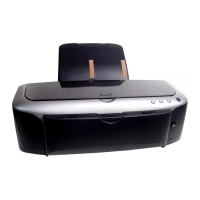
